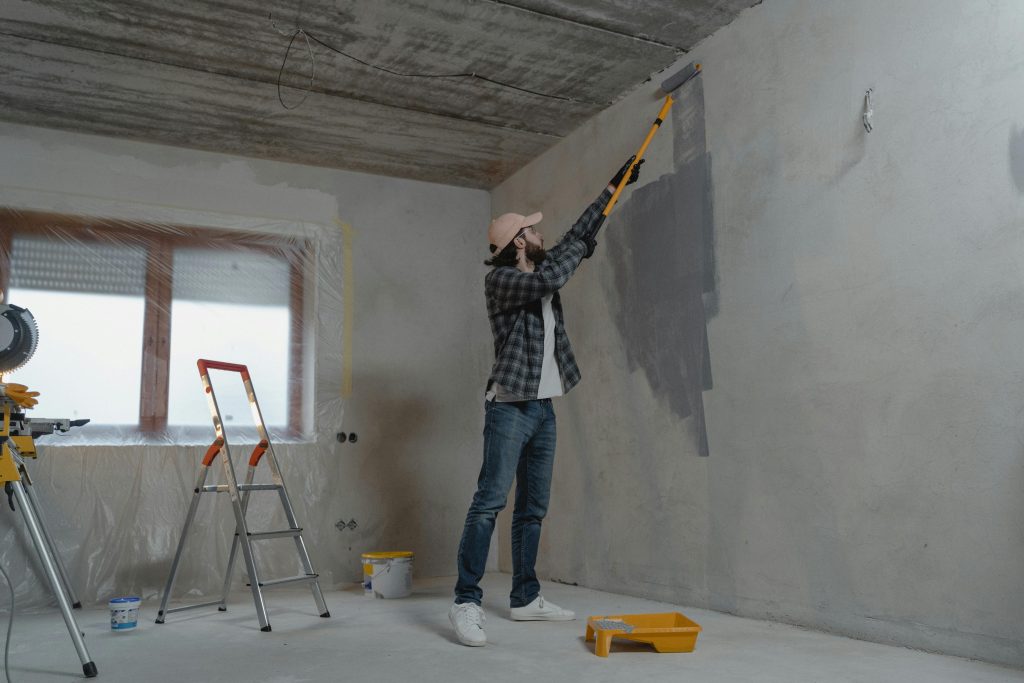Choosing the right materials for building a house is crucial for ensuring durability, cost-effectiveness, and sustainability. The materials you select will impact the overall quality, maintenance requirements, and longevity of your home. This article explores some of the best materials to invest in for house construction, considering factors like strength, environmental impact, and cost.
Brick and Mortar
Brick and mortar have been traditional building materials for centuries, known for their durability and classic appeal. Bricks are made from clay or shale and offer excellent thermal mass, helping to regulate indoor temperatures. They are fire-resistant, low-maintenance, and can withstand various weather conditions. Although brick houses can be more expensive to build initially, their longevity and minimal maintenance costs make them a wise investment. you can afford to invest in high-quality bricks, ensuring your home is sturdy and aesthetically pleasing for generations.
Concrete
Concrete is one of the most widely used building materials due to its versatility and strength. It is composed of cement, water, and aggregates like sand or gravel. Concrete structures are known for their durability, fire resistance, and low maintenance. They can be molded into various shapes and sizes, making them suitable for foundations, walls, and floors. Investing in reinforced concrete can enhance the structural integrity of your home, making it earthquake-resistant and long-lasting. A 3000 loan can help cover the costs of premium-grade concrete and reinforcing materials, ensuring a solid and dependable foundation for your house.
Wood
Wood is a popular choice for house construction due to its natural beauty, versatility, and ease of use. It is a renewable resource, making it an environmentally friendly option. Different types of wood, such as oak, pine, and cedar, offer various benefits in terms of strength, appearance, and resistance to pests and decay. Wood can be used for framing, flooring, and finishing, providing a warm and inviting aesthetic to your home. While wood requires regular maintenance to prevent rot and insect damage, a loan can help you invest in high-quality, treated wood that ensures longevity and reduces upkeep costs.
Steel
Steel is an excellent material for house construction, known for its strength, durability, and flexibility. It is resistant to pests, fire, and extreme weather conditions, making it a reliable choice for structural components like beams and columns. Steel frames are lighter than traditional materials, reducing the overall weight of the building and providing design flexibility. Additionally, steel is recyclable, contributing to sustainability. Although steel can be more expensive initially, its long-term benefits outweigh the costs. A loan can assist in purchasing high-quality steel, ensuring your home is built to withstand the test of time.
Stone
Stone is one of the oldest building materials, renowned for its strength, durability, and timeless appeal. Natural stones like granite, limestone, and sandstone are often used for foundations, walls, and exterior facades. Stone buildings are highly resistant to weather, fire, and pests, requiring minimal maintenance over the years. The aesthetic appeal of stone adds significant value to a property, making it a worthwhile investment. While stone can be expensive to source and work with, a loan can help you afford premium stone materials, ensuring your home is both beautiful and enduring.
Insulated Concrete Forms (ICFs)
Insulated Concrete Forms (ICFs) are an innovative building material that combines the strength of concrete with excellent insulation properties. ICFs consist of hollow blocks or panels made of insulating materials, which are stacked and filled with concrete. This construction method provides superior thermal insulation, soundproofing, and energy efficiency, reducing heating and cooling costs. ICF homes are also highly durable and resistant to natural disasters. Investing in ICFs can lead to long-term savings and increased comfort. A loan can help cover the higher initial costs of ICFs, ensuring a well-insulated and resilient home.
Rammed Earth
Rammed earth is a sustainable building material that has been used for thousands of years. It involves compacting a mixture of soil, clay, and sometimes stabilizers like cement or lime, into molds to form solid walls. Rammed earth structures offer excellent thermal mass, regulating indoor temperatures and reducing energy consumption. They are also fire-resistant, pest-resistant, and environmentally friendly. Although constructing with rammed earth can be labor-intensive, the resulting homes are sturdy and energy-efficient. A loan can help offset the costs of labor and materials, allowing you to invest in this eco-friendly building technique.
Structural Insulated Panels (SIPs)
Structural Insulated Panels (SIPs) are a modern building material that offers excellent strength, energy efficiency, and ease of construction. SIPs consist of an insulating foam core sandwiched between two structural facings, typically made of oriented strand board (OSB). They provide superior insulation, reducing heating and cooling costs, and are known for their airtightness and durability. SIPs can be used for walls, roofs, and floors, speeding up the construction process. While SIPs can be more expensive than traditional materials, a loan can help you invest in these high-performance panels, ensuring a comfortable and energy-efficient home.
Bamboo
Bamboo is an increasingly popular building material due to its sustainability, strength, and rapid growth. It is a versatile material used for framing, flooring, and finishing. Bamboo is lightweight yet strong, with a tensile strength comparable to steel. It is also resistant to pests and has a natural aesthetic appeal. Bamboo construction can be cost-effective and environmentally friendly, as it sequesters carbon and grows quickly without the need for pesticides. Investing in high-quality bamboo materials can enhance the sustainability and beauty of your home. A loan can support the purchase of premium bamboo, ensuring a durable and eco-friendly construction.
Conclusion
Selecting the best materials for building a house involves considering factors such as durability, cost, environmental impact, and aesthetic appeal. From traditional options like brick and stone to modern innovations like SIPs and ICFs, each material offers unique benefits. Investing in high-quality materials ensures the longevity and value of your home. A loan can provide the necessary funds to purchase these premium materials, making your investment in a sturdy and beautiful home more feasible. By carefully choosing the right materials, you can build a house that stands the test of time and meets your needs and preferences.


